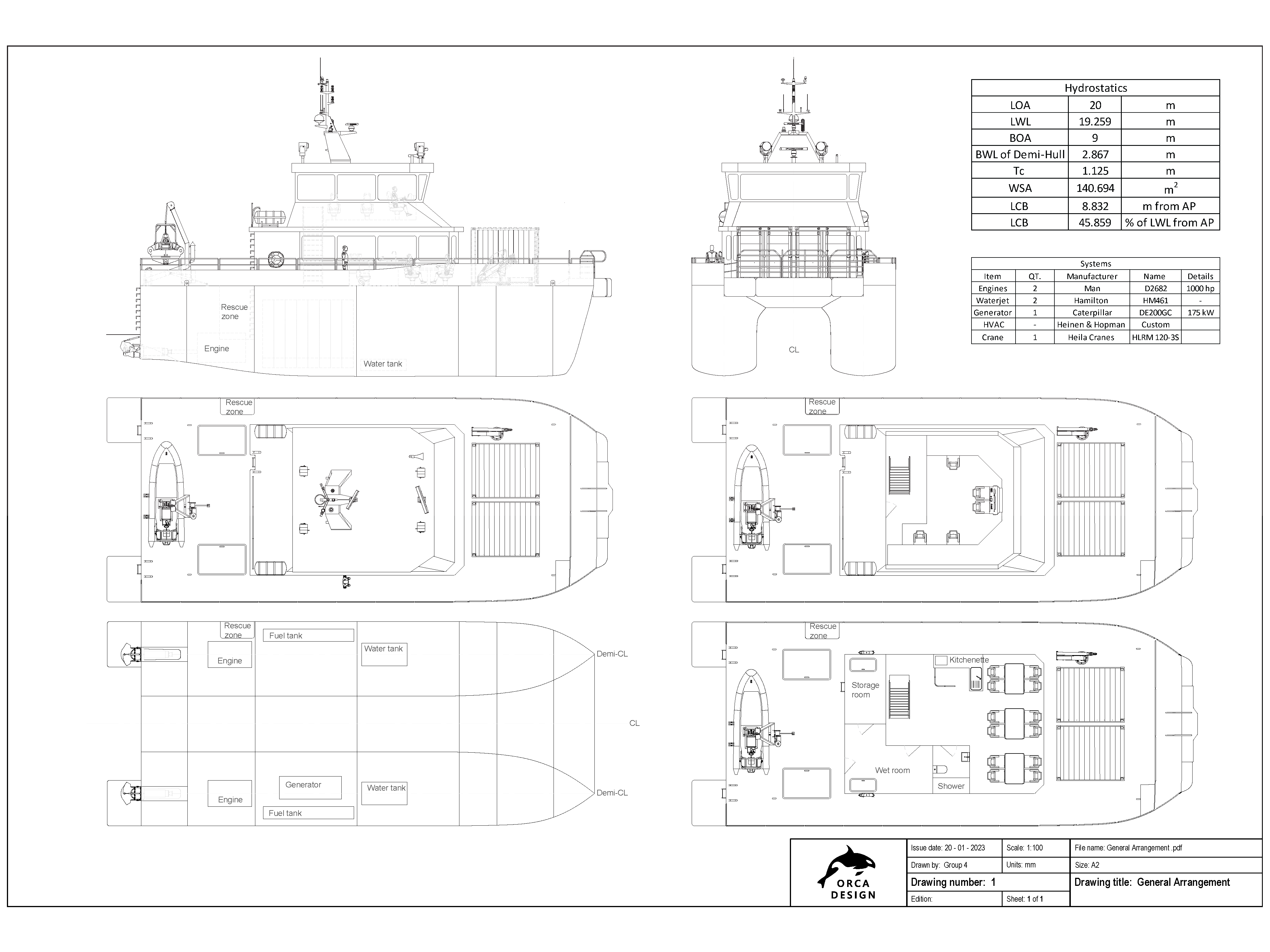I designed a 14m LWL aluminium SAR vessel for my dissertation. The project was to design this vessel and to use hull forms and systems to reduce seas sickness. The project assumed that the acceleration on the crew would increase the chance of sea sickness, the focus of the design was to reduce accelerations on the crew.
Three bow shapes were compared, a raked bow, a plumb bow and an inverse bow shape were compared. Stations 6 to 10 are common between the three hulls so a comparison between the bow shapes is fare. The lines plan for the three bow shapes are shown bellow.
Full description are currently being crafted for each drawing to add context
Raked Bow
The bow shape bellow was the hull shape selected for the final vessel. This bow shape has the most internal volume in the bow section that could be used for storage. The flared bow also deflects spray from the deck.
Bow Shape Conclustion
The bow shape will make little difference when running at a 4 degree trim due to the rocker the forward perpendicular moves to between stations 2 and 3 where the bow shapes are functionality the same with similar dead rise angles. The vessel will trimmed with trim tabs to keep the bow in the water.
The General Arrangements
The wheel house is place near the LCF (longitudinal centre of flotation) as this is the point were the accelerations from weather will be minimal.
The wheel house in place forward to reduce maintenance time as large hatches are place over the engines.
Structural Design
Typical Scantlings
Ventilation



